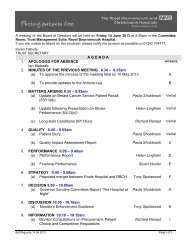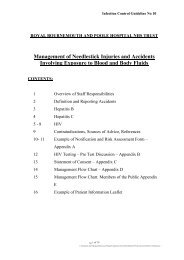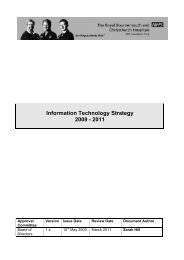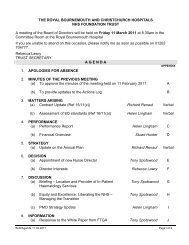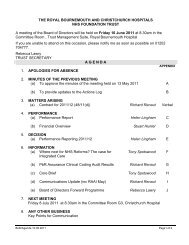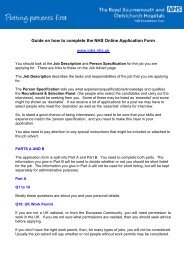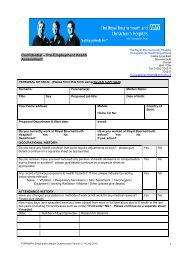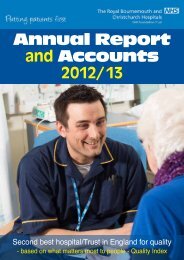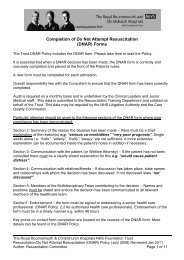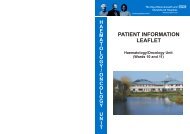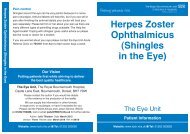Management of Needlestick & Contamination Injuries - Royal ...
Management of Needlestick & Contamination Injuries - Royal ...
Management of Needlestick & Contamination Injuries - Royal ...
- No tags were found...
You also want an ePaper? Increase the reach of your titles
YUMPU automatically turns print PDFs into web optimized ePapers that Google loves.
3.0 DEFINITIONS<strong>Needlestick</strong> & <strong>Contamination</strong>For the purposes <strong>of</strong> this guideline <strong>Needlestick</strong>s are defined as objects that carry the risk<strong>of</strong> transmission <strong>of</strong> blood borne viruses. This could include suture needles, hollowneedles, scalpels, razors, sharp edged or pointed surgical instruments, broken glass orany sharp object or material that breaches the natural skin barrier. Sharp tissue such asbone or teeth may also pose a risk <strong>of</strong> injury.<strong>Contamination</strong> injuries are defined as any exposure <strong>of</strong> body fluids into the mucousmembranes i.e. nose mouth etc.4.0 ROLES AND RESPONSIBILITIESAll staff are responsible for compliance with procedures for the prevention andmanagement <strong>of</strong> needlestick injuries and accidents involving exposure to blood and bodyfluids.4.1 Managers (Clinical Leaders & Heads <strong>of</strong> Department)Managers have the duty to ensure that there is a "Safe System <strong>of</strong> Work" and that allnecessary equipment for the safe use and handling <strong>of</strong> sharps, such as sharp boxes andsharps trays etc are readily available for use.Managers are responsible for ensuring that a safe environment is provided for patientsand visitors. This includes ensuring that appropriate arrangements are in place toensure that sharps are disposed <strong>of</strong> securely and correctly and that sharps boxes are notaccessible to non-members <strong>of</strong> staff.Managers are responsible for completing COSHH Assessments to identify potentialrisks <strong>of</strong> microbiological and chemical hazards and ensuring that appropriate action plansand arrangements are in place to prevent or control exposure to identified risks.Managers are responsible for completing local Risk Assessments (in accordance withthe Trust Risk Assessment Policy) to identify potential risks <strong>of</strong> needlestick or sharpsinjuries. (See Section 5.0)Managers are responsible for monitoring exposure and for investigating reportedadverse incidents, including near miss events. Incidents must be reported andinvestigated in accordance with the Trust Accident and Incident Reporting Policy (AIR)and managers must report RIDDOR incidents immediately to Occupational Health,Clinical Governance & Risk <strong>Management</strong> DepartmentsManagers are responsible for ensuring personal protective equipment is in place andworn by staff for any procedure identified as hazardous (i.e. contact with a blood bornevirusRBCHOCCHEALTH\DATA\WS\POLICIES\NEEDLESTICKPOLICY\SHARPS POLICY\VERSION 6 LP 2011Page 6 <strong>of</strong> 33



